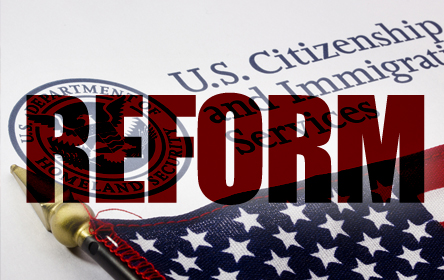By Jennie Illustre
Three on-going developments on immigration reform have Asian Pacific American advocates cheering on one hand, and urging persistence on the other.
One welcome directive by President Obama would fast-track, through parole visa, the family reunification of some 20,000 Philippine-based single and married sons and daughters with surviving World War II veterans who are Filipino Americans or permanent residents. The veterans are in their late 80s or 90s. Veteran Rudy Panaglima of Arlington, Virginia, said in a phone interview, “This is wonderful! We’re very grateful.” He and his wife Pura have two adult sons.
The directive was issued on July 15 under Executive Action. It would also allow the veterans’ offspring to live and work in the US. In 1990, the US Congress passed a bill granting citizenship to the veterans–more than 50 years after the US promised this benefit.
The veterans lost no time in obtaining approved petitions for their children in the 1990s. But like other nationalities, the adult children have to wait for 22 years to enter the country. Reason: The US government limits each country to obtain only 7 percent of the 226,000 family-sponsored available visas every year.
Attorney Arnedo S. Valera, legal counsel of Justice for Filipino American Veterans (JFAV), explained the parole visa is similar to the Cuban/Haitian Family Reunification program. Parole is granted “to allow individuals to come to the United States on a case-by-case basis for a temporary period of time based on urgent humanitarian reasons or significant public benefit.”
By its nature, the directive will no longer apply once Obama ends his second term in January 2017, unless his successor continues the policy. This explains the sense of urgency of some Democratic lawmakers, as well as Asian American and Latino advocacy organizations, in getting the controversial comprehensive immigration reform bill passed by Congress and enacted into law before Obama steps down.
Obama has resorted to executive authority to fix the nation’s broken immigration system. He has cited frustration with the US Congress in failing to a sweeping immigration reform bill.
Setback
In another development, the Executive Action issued last November has faced legal challenges from 26 states. The executive authority grants a three-year deportation relief and also work permit through expanded Deferred Action for Childhood Arrivals (DACA). It extends the same temporary relief under the Deferred Action for Parents of Americans (DAPA).
The Executive Action has suffered a setback, top newspaper Politico reported, noting the New Orleans appeals court, which held a hearing on July 10, is considered the most conservative appeals court in the country. It added the Executive Action is likely headed for a final ruling by the Supreme Court next year.
In related news, Judge Andrew Hanen of Texas ordered top immigration officials to appear before him onAugust 19 to explain why the administration keeps issuing DAPA and expanded DACA deferrals, despite his February ruling to stop its implementation.
An expert in Heritage Foundation, a leading conservative think tank in the nation’s capital, pointed out in an analysis that the Department of Justice filed an “Advisory” to the court on March 3, stating that the Obama administration had issued three-year deferrals to more than 100,000 aliens under DACA and DAPA.
Expanded DACA–and an earlier DAPA issued in 2012, which is not affected by the recent ruling–would apply to undocumented Asians and Hispanics raised and educated in the US. DAPA covers undocumented Asian and Hispanic parents of citizens or permanent residents, and these parents must have lived with their families in the country for five years. Pew Research Center estimates DACA and DAPA would benefit about 4.3 million, or nearly half of the nation’s undocumented.
The first DACA, issued under Executive Action by President Obama on June 15, 2012, granted a delay of deportation and also allowed work permit for two years to adults who, as children and minors entered the country without authorized documents accompanied by their undocumented parents or a companion. Both DAPA and DACA: 1) do not confer lawful immigration status; 2) change an individual’s existing immigration status; or 3) provide a path to citizenship.
Judge’s Viewpoint
Last July10, Politico reported New Orleans Judge Jerry Smith told government lawyers that the November 2014 Executive Action on DAPA and expanded DACA puts the undocumented concerned a step ahead in qualifying for potential benefits, such as Social Security and Medicare, work authorization, earned income tax credits, and state drivers’ licenses.
Debbie Smith, Associate General Counsel on Immigration Law of the Service Employees International Union (SEIU), replied on July 24 to an email interview: “It’s true that we don’t know when we will have the final decision–most likely from the Supreme Court–on when DAPA and expanded DACA can go forward.”
But she added: “Nonetheless, I think that it’s worth it to remind people to continue to prepare documents because in addition to DAPA/DACA, any type of immigration reform will require people to present evidence of their presence in the US. So while it is no longer urgent that people have all their documents ready, ultimately whether it’s the implementation of DAPA/DACA, or immigration reform (Editor’s Note: through Congress), people will need these documents.”
Filipino American civil rights activist Jon Melegrito replied in another email interview: “Immigrant rights advocates are of course disappointed with this latest setback, but are prepared to go all the way to the Supreme Court if necessary, confident they will prevail in the end. The Supreme Court has been making stunning rulings on controversial issues, notably on Health Care and marriage equality. I am optimistic that it will rule yet again on the side of reason and practicality as far as Obama’s executive actions are concerned.” He ventured his personal opinion that the ruling “will be close, but it will be a win.”
The country has an estimated 11.3 million undocumented, most of them Hispanics, according to Pew Research Center. Of this total, an estimated 1.3 million are of Asian nationalities, according to a Washington Poststory last November. Majority of them come from China, Philippines, India, Korea and Vietnam.
The undocumented–the term pushed by advocates and adopted by the Mainstream media, with some using the term unauthorized–refers to aliens who entered the country without authorized documents, as well as those who have overstayed with expired visas.
Pew Research Center noted that “Obama’s recent action was the most significant protection from deportation offered to unauthorized immigrants since 1986, when Congress passed a law that allowed 2.7 million unauthorized immigrants to obtain a green card” or permanent residency in the country.
2016 Presidential Elections
The November 2014 Executive Action will have a direct impact in next year’s elections. Politico reported in July that if the Supreme Court justices take the case on the Executive Action, a final decision may not come before June 2016–right in the middle of the presidential elections. The question then arises: How will the immigration issue affect the presidential elections?
“I think we’re already seeing the impact of immigration on presidential politics,” SEIU Associate General Counsel on Immigration Law Debbie Smith pointed out. “Of course, a Supreme Court decision on DAPA/DACA will remind people of the role of Texas and the 25 other Republican led states in halting a small step for immigration family fairness.”
Filipino American advocate Melegrito replied in an email interview: “This is a campaign issue that will favor the Democrats, given the Republicans’ refusal to take up comprehensive immigration reform. Republicans can no longer argue that President Obama is weak on enforcement. A majority of the general public is for giving undocumented immigrants a path to citizenship, and that’s the winning argument in the coming election, boosted further by the backlash against (business tycoon Donald) Trump’s anti-immigrant and bigoted remarks.”
Legislation, not Executive Action
Filipino American Attorney Valera, who is also executive director of the Migrant Heritage Commission, said the news regarding WWII veterans and their children “is significant and must be welcomed by all of us.”
“But of course,” he stressed in a July 16 email interview, “our main call is still to campaign for a Comprehensive Immigration Reform for the more than 11 million undocumented immigrants, including about 500,000 Filipinos. This can be done through Congress and not Executive Action.”
Media experts contend the controversial comprehensive immigration reform bill has no chance of passing in the pre-election Congress. Even a piece-by-piece legislation is a long shot. Last March 13, Democratic Senators Harry Reid and Mazie K. Hirono introduced the Filipino Veterans Family Reunification Act as a stand–alone bill in the 114th US Congress. The bill seeks to expedite the visa process for children of Filipino American and Filipino green card WWII veterans. The bill’s original co-sponsors are Senators Barbara Boxer and Brian Schatz. Senator Lisa Murkowski, Republican from Alaska, joined the bill’s mostly Democratic co-sponsors.
In 2013, Senator Hirono was able to include this bill as an amendment to the comprehensive immigration reform bill that passed in the Senate. The legislation by the “Gang of Eight,” a group of eight Democrats and Republicans, proposed a 13-year path to legalization for the undocumented and an employee verification system. Mainstream media reported Senate’s bipartisan bill was the result of 2012 Republican presidential candidate Mitt Romney’s 44-point loss among Latinos.
But the Republican-dominated House of Representatives called the bill “amnesty” and unfair to legal aliens who follow the law by applying through the system. It also favored the focus on border control to stem further entry of the undocumented, and did not take any action on the Senate bill. The comprehensive reform bill covered both legal and undocumented immigration, and this also presented a dilemma to some lawmakers.
Victory for AAJC
The directive on WWII veterans’ offspring is a result of the efforts of many advocacy organizations. Among them are the National Federation of Filipino American Associations (NAFFAA), the American Coalition for Filipino Veterans (ACFV), and the Asian American Justice Center (AAJC).
AAJC President and Executive Director Mee Moua declared on July 15, “This is a day to celebrate.” She added: “We’re grateful the Obama administration is taking action so our veterans can be reunited with their children and receive the love and care they need during their golden years.”
AAJC, based in the nation’s capital, has championed immigration reform for decades. On June 30, Prerna Lal, a staff attorney for immigration and immigrant rights at Asian Americans Advancing Justice/AAJC, wrote a Parole Brief to the White House. Among other things, the brief cited previous parole visas granted by Republican and Democratic presidents–and it helped lead to the July 15 directive.
NaFFAA National Chair JT S. Mallonga thanked AAJC for its efforts through the years. “We appreciate as well the efforts of our US Representatives and Senators who have championed the cause of our veterans,” he added. The late Senator Daniel K. Inouye and retired Senator Daniel K. Akaka, both WWII heroes, Senator Reid, as well as Representative and now Senator Mazie K. Hirono, were among the authors of the Filipino veterans’ family reunification bill year after year, to no avail.
New America Media (NAM) lauded the development But it noted that the “Obama administration has not provided any specific details on the eligibility requirements of the policy, or when will it be implemented.”
Advocates like ACFV volunteer Executive Director Eric Lachica are pushing for more details. He hailed the directive on July 15. But he was concerned about the lack of implementing rules. “If the veterans have died, are their widows included?” he asked during a phone interview. “We strongly support their inclusion.”
On August 4, he said in an email: “We have been talking with Senator Hirono’s staff. They are working on persuading the White House and the United States Citizenship and Immigration Services to include Filvets’ widows and speeding up parole visa regulations.” He stressed, “For faster implementation, we need other stakeholders to be on top of this–AAJC, other Asian American advocacy groups, the veterans’ families, as well as other members of Congress.”
Candi Romulo, a widow in Oxon Hill, Maryland, said in a phone interview on July 18 that the directive came too late for her husband. “But this is welcome news for me and my children. I hope widows like me are included,” she said.
The Presidential Memorandum on “Modernizing and Streamlining the US Immigrant Visa System for the 21st Century” issued on July 15, directs the United States Citizenship and Immigration Services (USCIS), under the Department of Homeland Security, to work with the State Department to establish a program that allows eligible family members of the veterans to come to the U.S. under parole status on a case-by-case basis.
The report by the Visa Modernization Task Force, a White House inter-agency group formed in November 2014, estimates 6,000 Filipino American WWII veterans currently live in the US. ACFV leader Lachica said the number “is probably half that, since many have died or retired to the Philippines.” Some 26,000 Filipino WWII veterans became citizens under the bill passed by the US Congress and enacted into law in 1990.
 Asian Fortune Your source for all things Asian American
Asian Fortune Your source for all things Asian American





